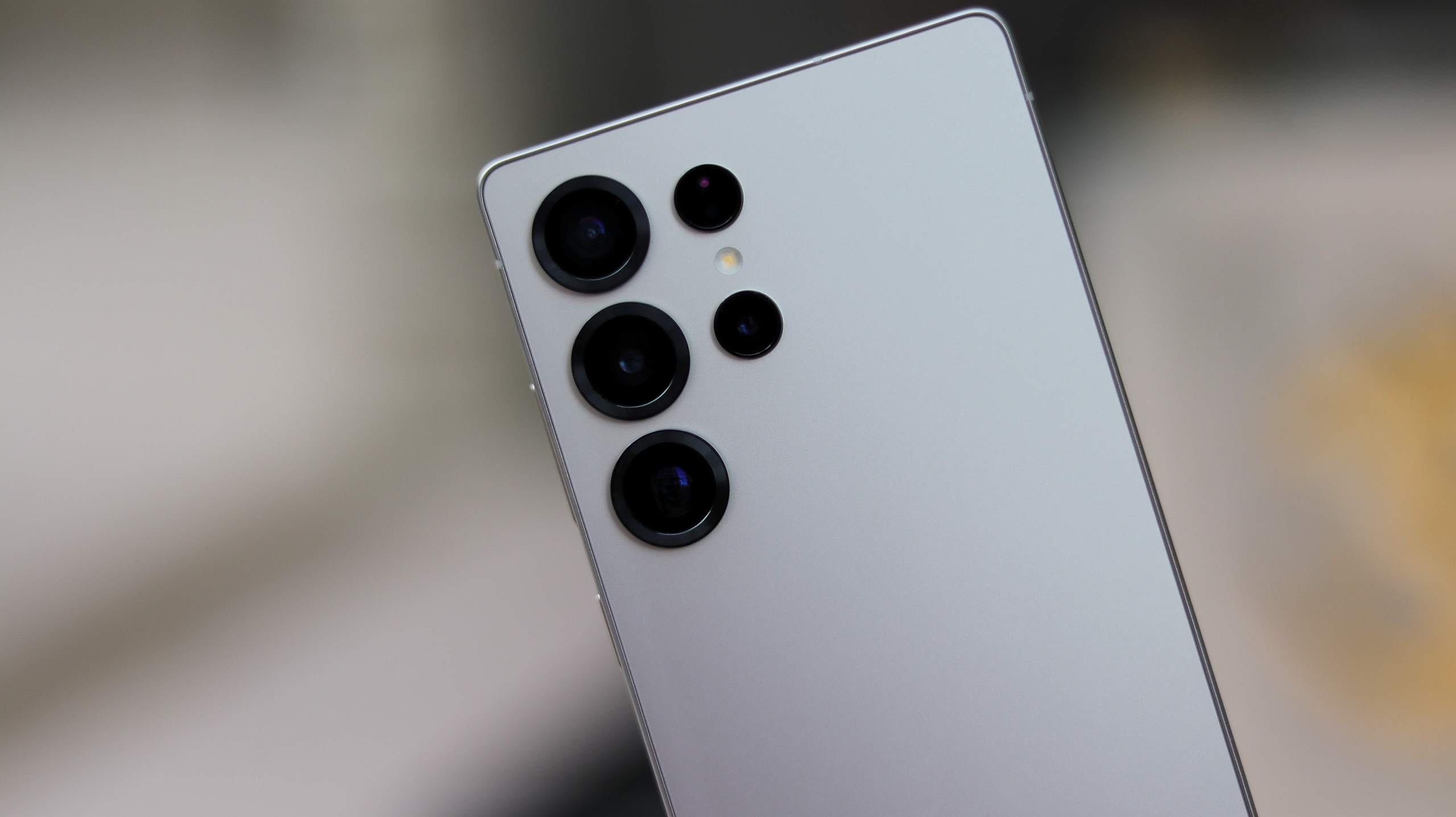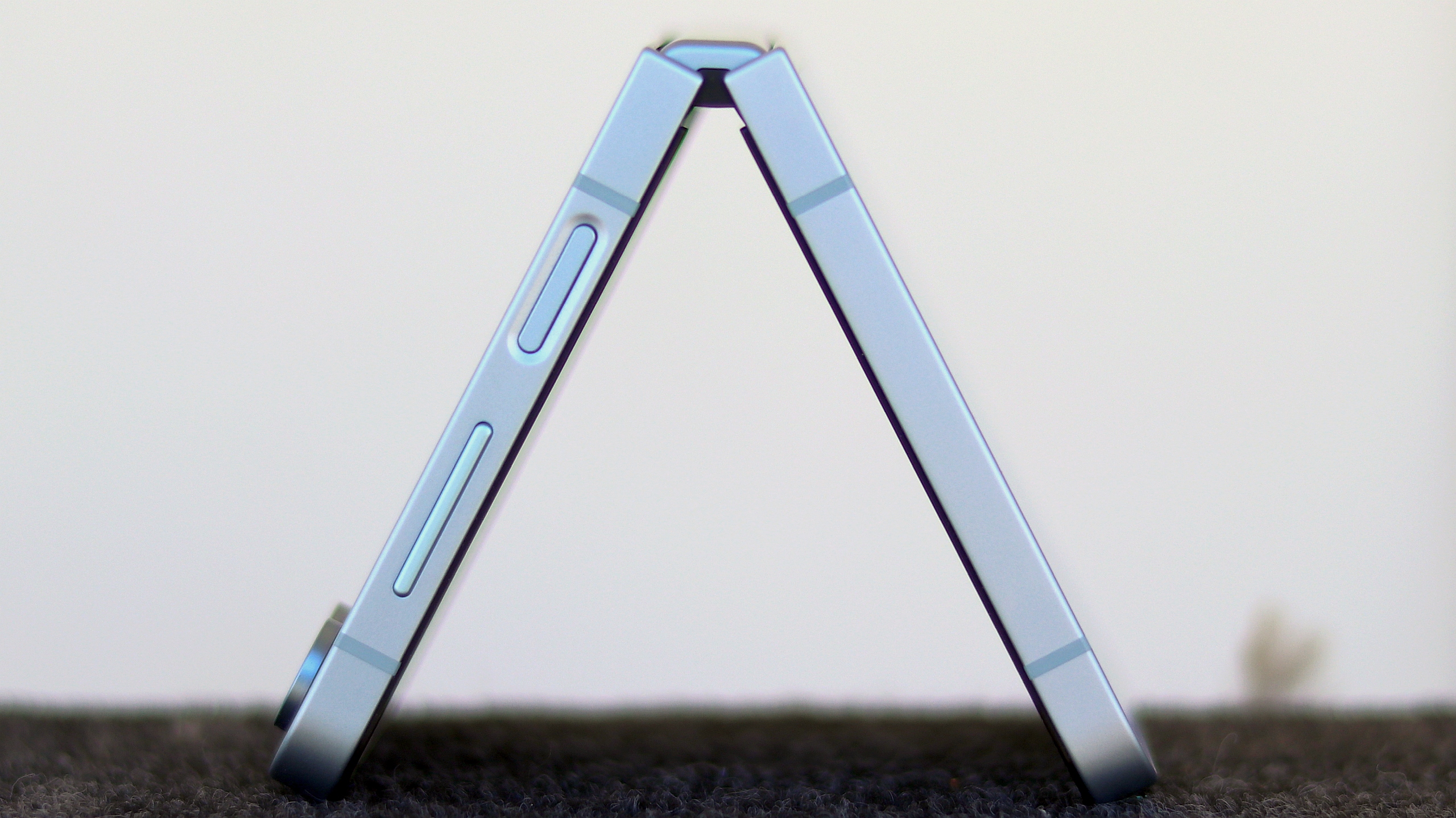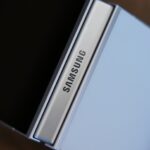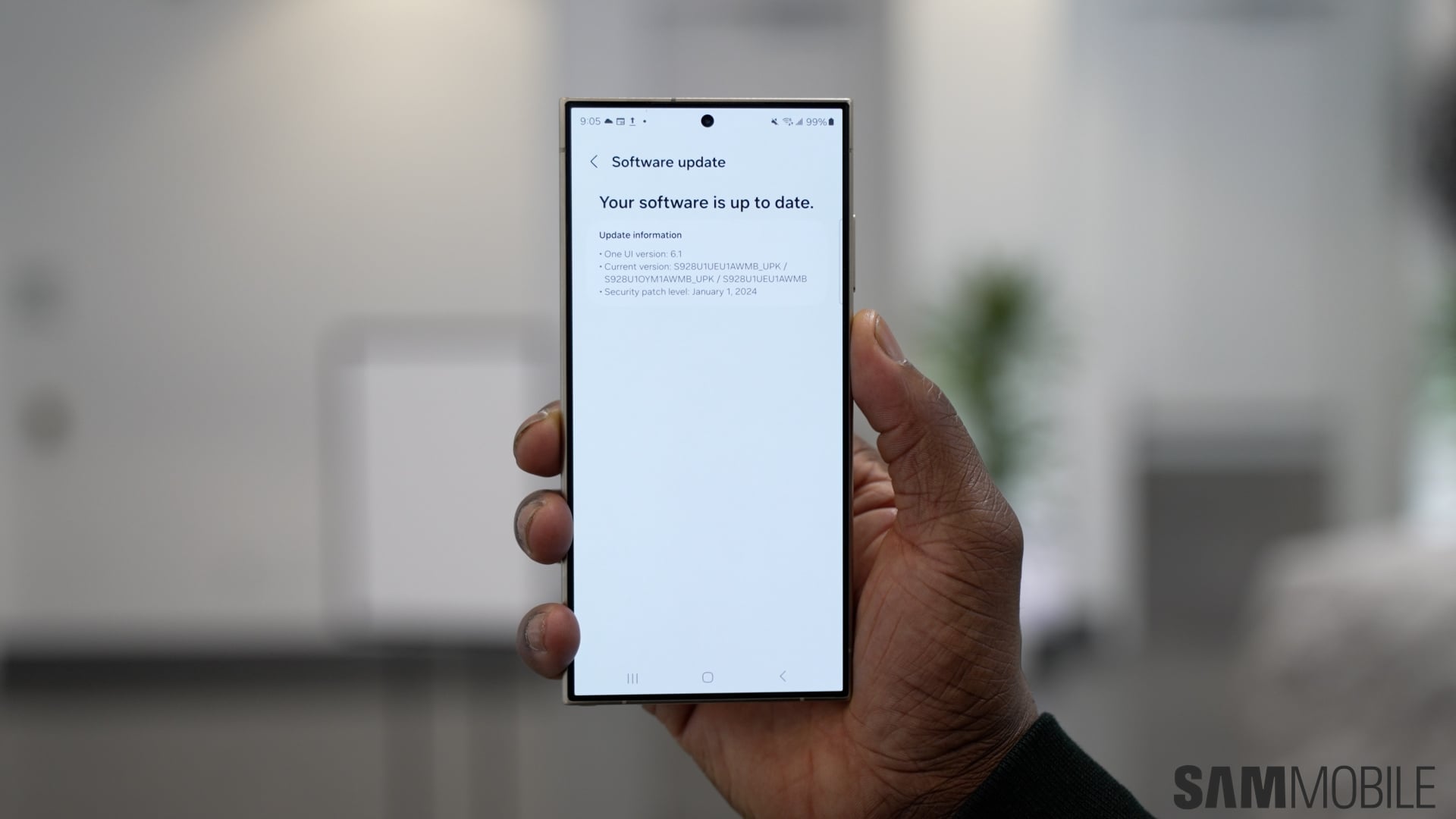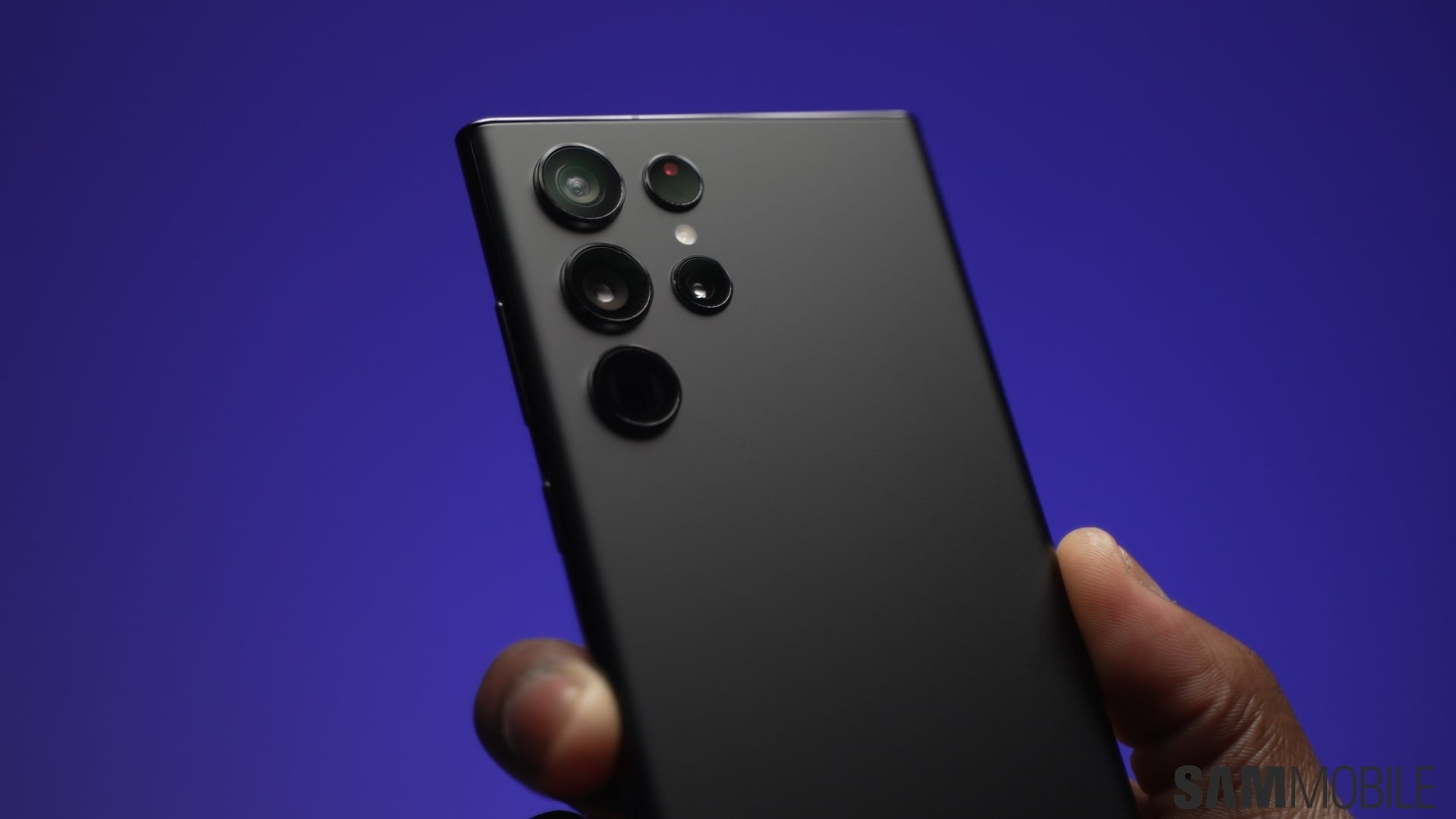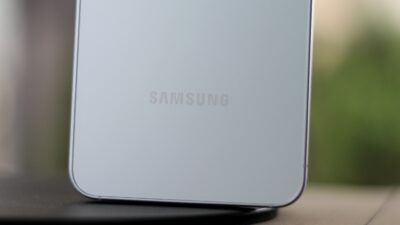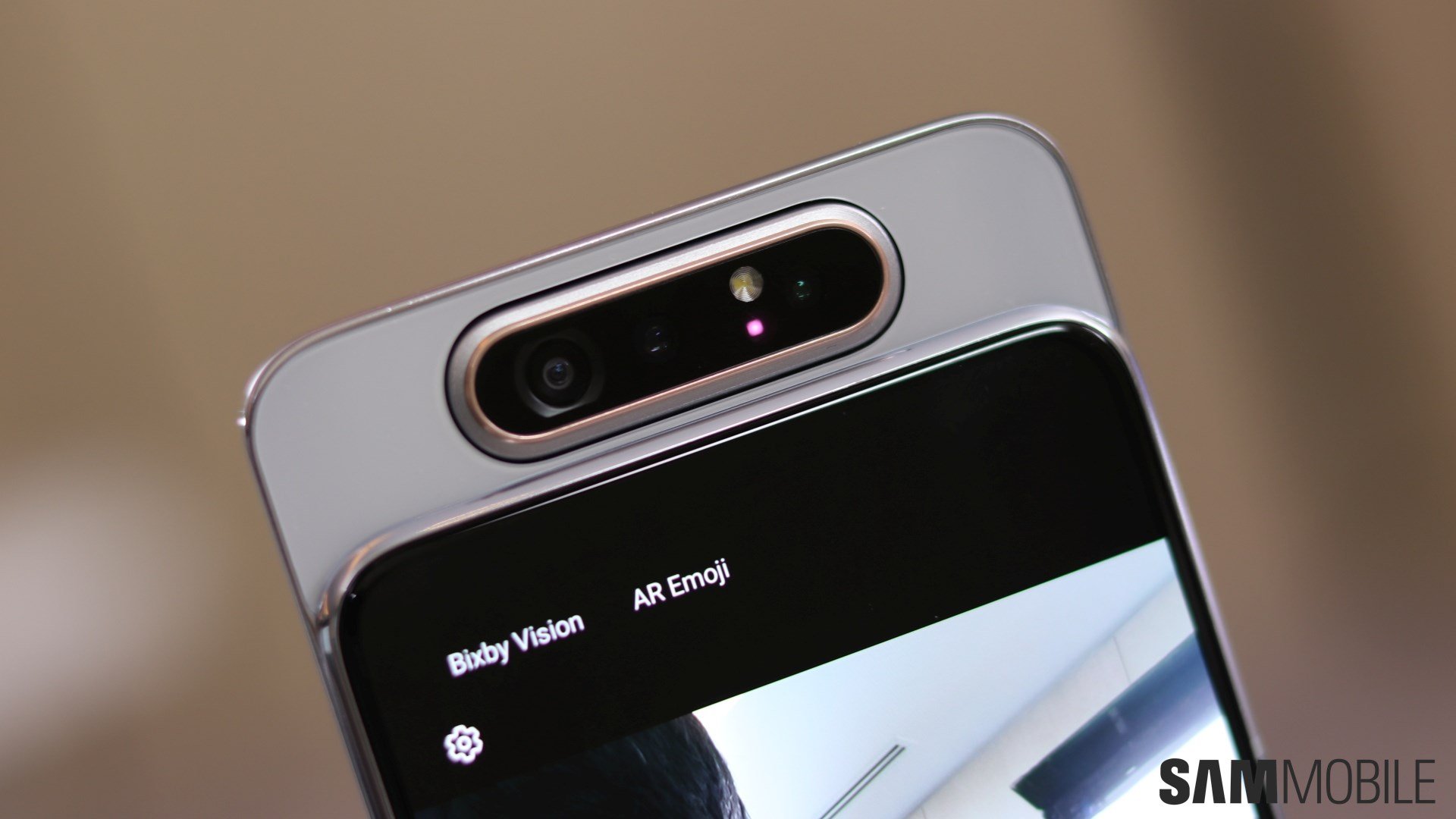
Introduction
Sensing the growing threat from Chinese rivals, Samsung revamped its midrange strategy towards the second half of last year. Instead of launching midrange devices that are merely inferior versions of its flagship models, the company decided to give them their own identity by packing them with new and innovative features.
The Galaxy A7 (2018) with its triple-camera setup and the Galaxy A9 (2018) with its quad-camera setup were the first set of devices born out of this new strategy. The Galaxy A80 is the latest device to join this list with its innovative camera system. It is also the most expensive, premium looking, and innovative device in the Galaxy A 2019 lineup so far.
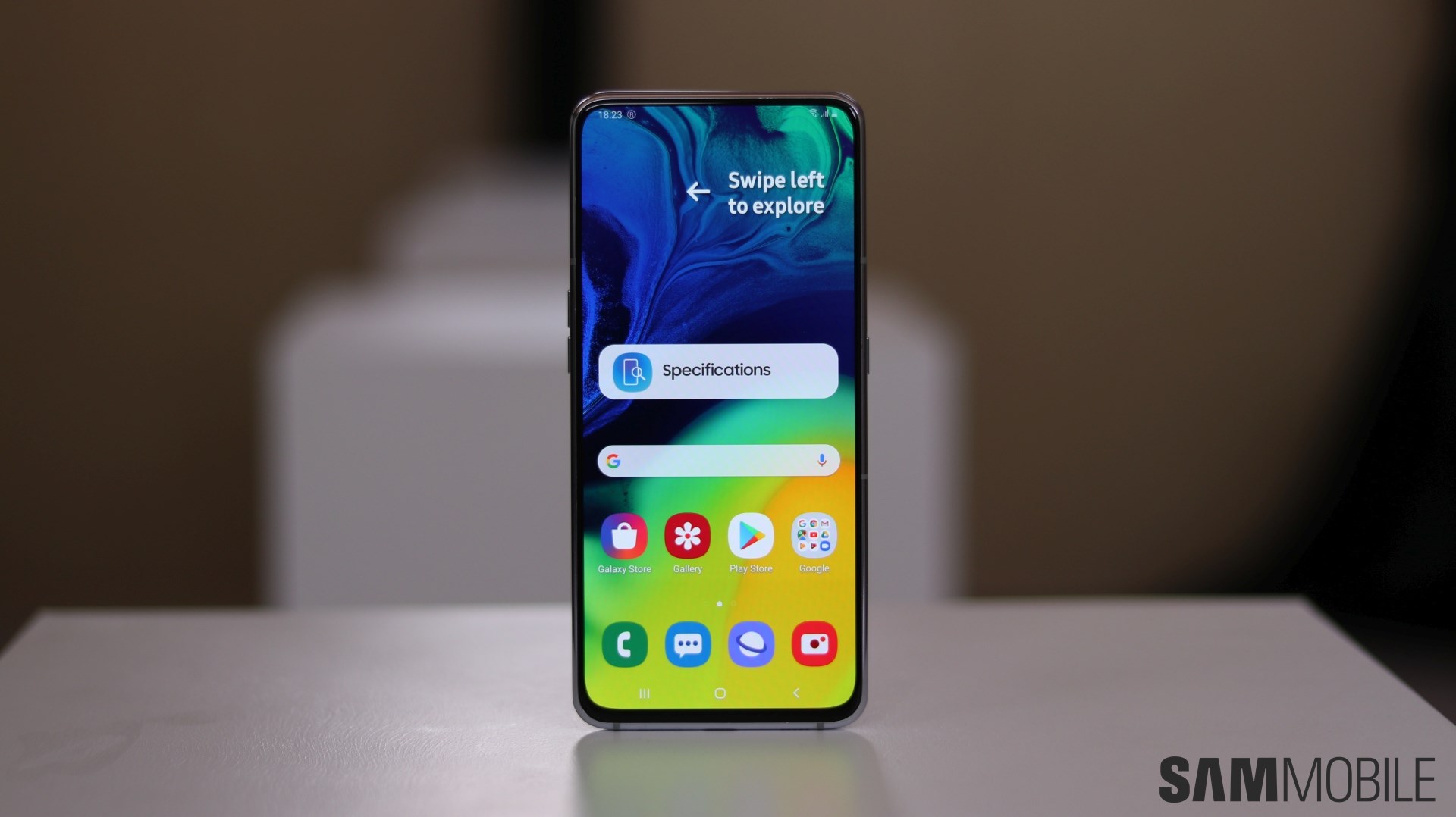
Design
Design and camera are the two main departments where the Galaxy A80 is completely different from other recent A series models. The front of the device is occupied by a large Infinity display without any notch or a hole-punch cutout. The bezels are tiny but not proportionate as the chin is larger than the top bezel. This nearly all-screen design is made possible by the new pop-up and rotating camera that makes a dedicated selfie camera redundant. Samsung also removed the ear speaker and replaced it with “sound under display” tech to maximize the screen-to-body ratio.
The back of the device has Samsung branding towards the middle and a horizontally arranged triple-camera system at the top. The camera module is not fixed and features a sliding and rotating system to double up as a selfie camera when needed. There is no capacitive fingerprint reader on the back as Samsung opted for an in-display scanner.
In terms of button and port placement, the Galaxy A80 is substantially different from other Galaxy devices. It has a power-cum-Bixby button on the right and a volume rocker on the left. On the bottom side, there is a SIM tray, USB Type-C port, speaker grille, and the primary microphone. Due to its sophisticated design, the device lacks a headphone jack and microSD option.
The Galaxy A80 is a premium midranger, and that reflects in its build quality. Unlike all the recent Galaxy A models, the A80 is made out of glass, giving it a premium finish. The device measures 165.2 x 76.5 x 9.3 mm and weighs a hefty 219 grams. The increase in thickness and weight is probably due to the size of the display and the unique camera system.
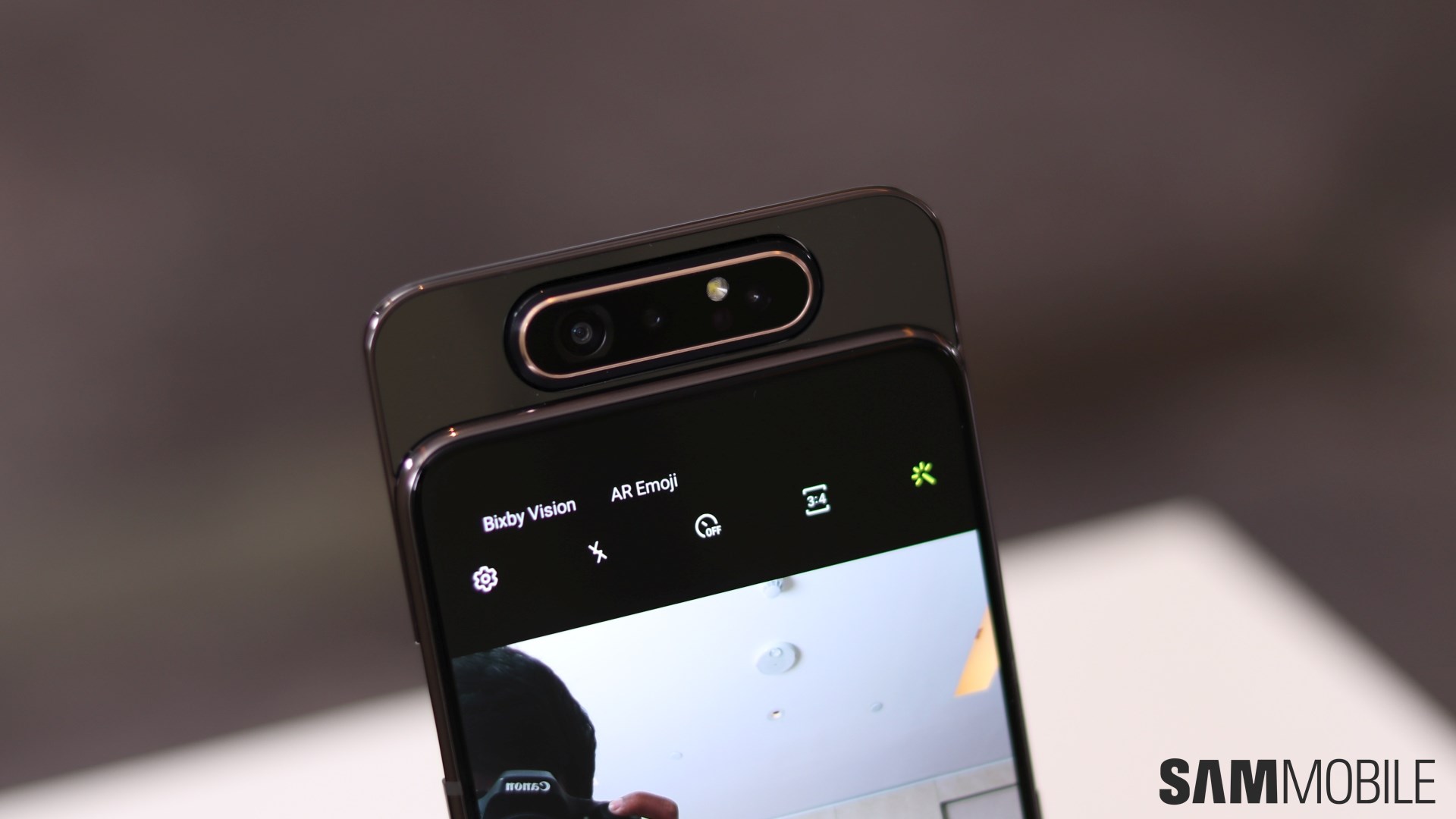
Specifications
The Galaxy A80 comes with 6.7-inch FHD+ Infinity display, Snapdragon 730 CPU, Adreno 618 GPU, 8 GB RAM, 128 GB memory, triple cameras on the back, In-display fingerprint scanner, USB Type-C port, Dolby Atmos, 3,700mAh battery, 25W fast charging, and Android 9 Pie with One UI on top.
The spec sheet of the Galaxy A80 is interesting since it is better than even the company’s flagships in areas like charging speed, resolution of the primary camera, etc. The new design, however, forced the company to remove nifty features like a headphone jack and a microSD slot which might disappoint some users.
You can find the complete list of specifications on our Galaxy A80 specifications page.
Display
The Galaxy A80 sports a flat 6.7-inch Super AMOLED screen without any hole-punch or a notch, which Samsung refers to as the New Infinity display. It’s an FHD+ (1080 x 2400) panel which gives it a pixel density of ~393 PPI. The company has not yet revealed the kind of protection used here, but it is probably some version of Corning Gorilla Glass.
The display also packs an in-display fingerprint reader for authentication. Though not officially confirmed by Samsung, it appears to be an optical reader like the one on the A50 and not the superior ultrasonic scanner found on the Galaxy S10/S10+.
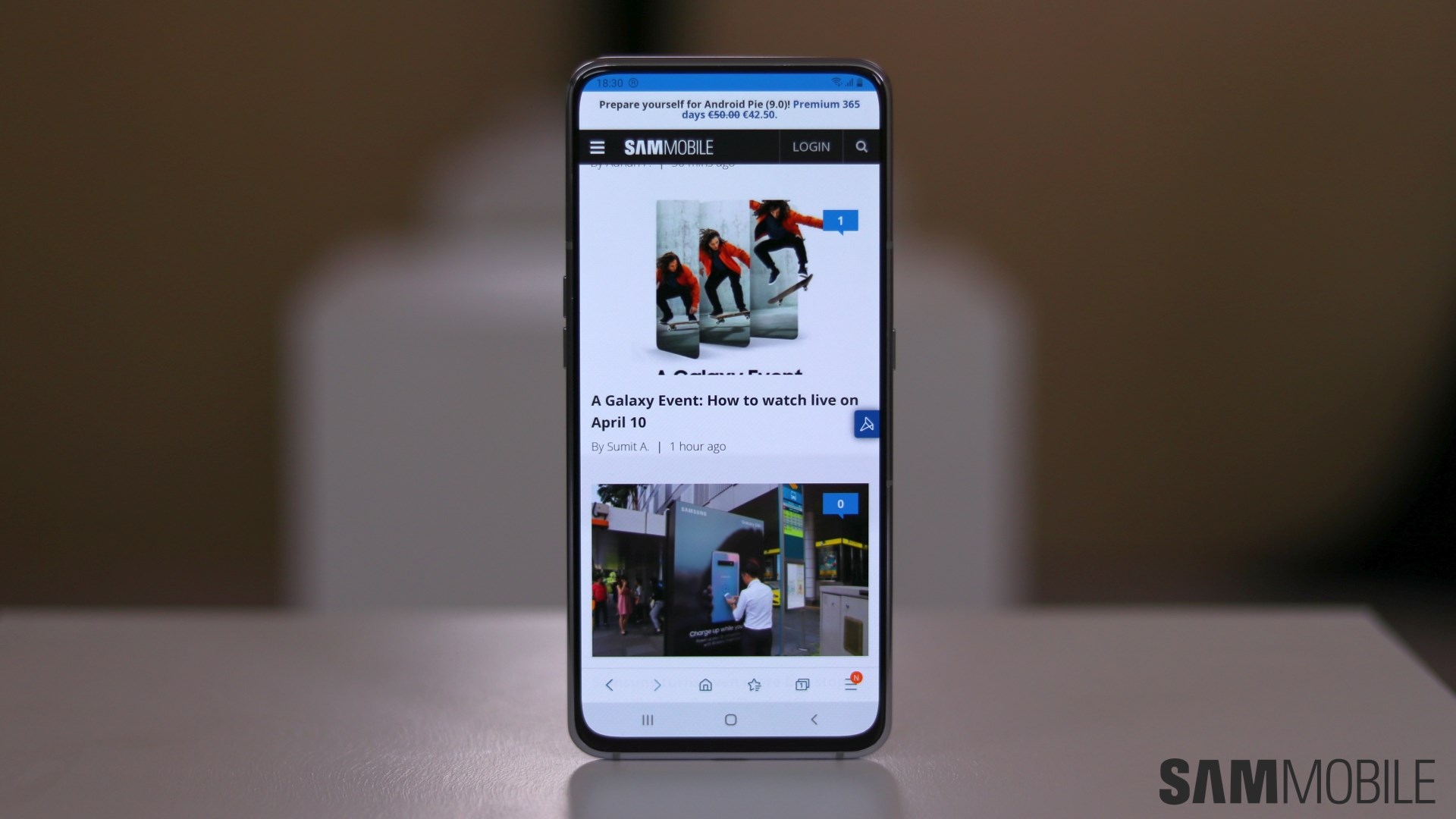
Camera
The camera department is undoubtedly the biggest USP of the Galaxy A80. The device features an innovative pop-up and rotating camera system which makes a separate selfie camera redundant. When a user selects the selfie option, the rear camera module slides up and rotates to turn into selfie shooter. You can see how it works in the below GIF.
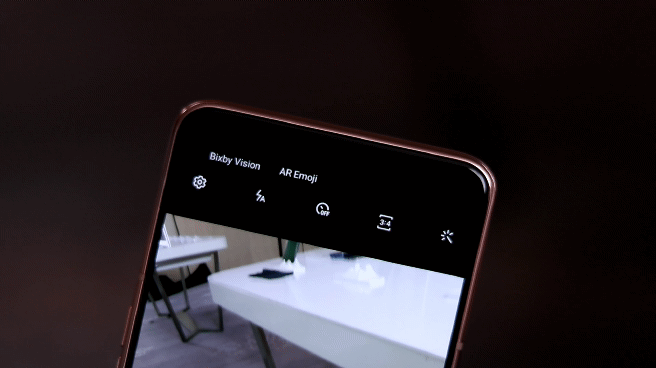
Apart from eliminating all kinds of notches, this system also brings the full power of rear cameras to selfies. The A80 has a triple-camera setup which consists of a 48 MP f/2.0 lens (highest ever in a Galaxy device) with PDAF (Phase Detection Auto Focus), 8 MP f/2.2 ultrawide lens, and a TOF 3D camera. Supported camera features include 4K recording, Scene Optimizer, Live Focus video, Super Steady video, enhanced AR effects, Flaw Detection, and more.
You can check out our review of the Galaxy A80 to know how the cameras perform in real life.
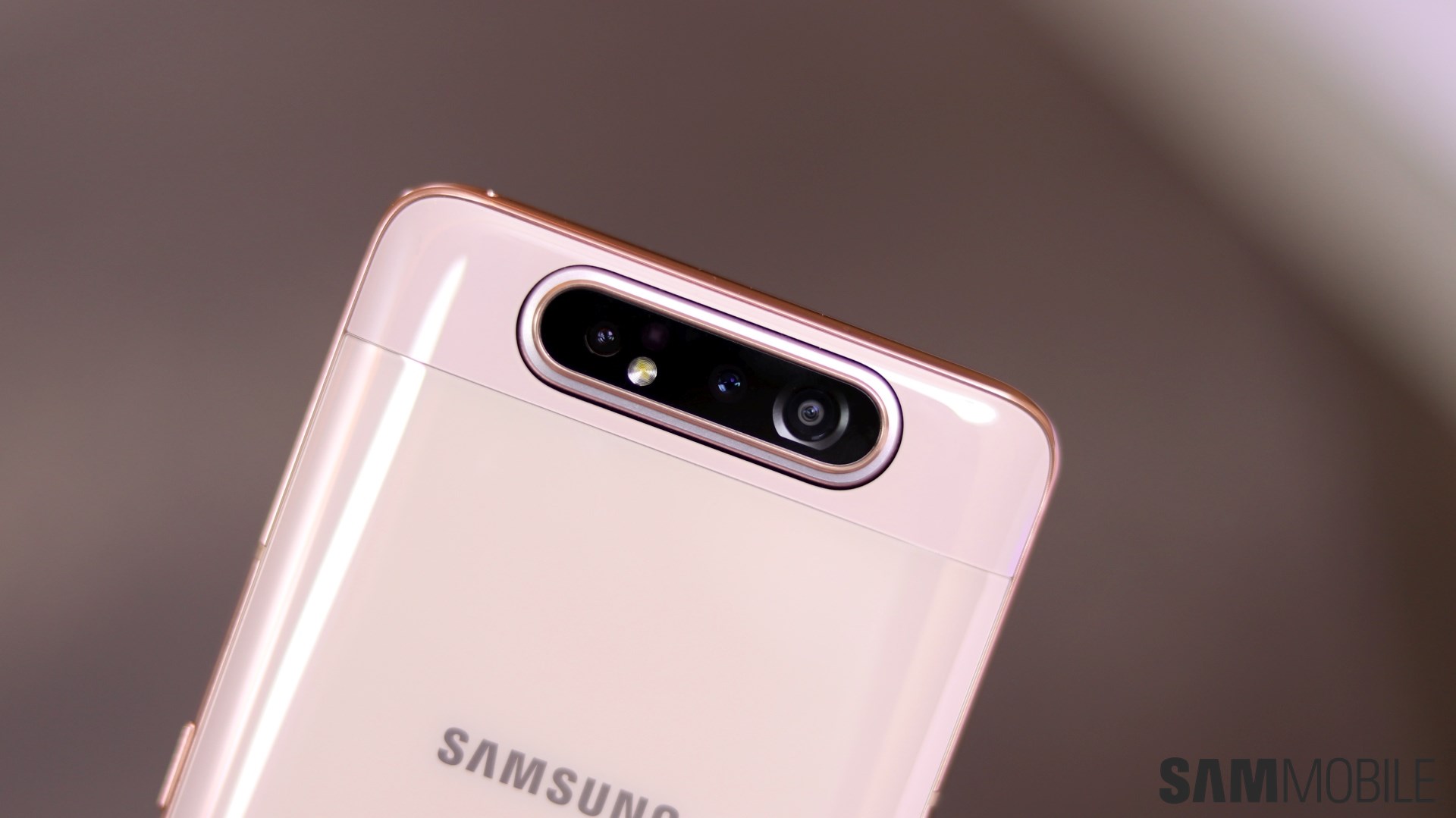
Software
The Galaxy A80 runs Android 9 Pie with Samsung One UI 1.1 on top, which is a minor incremental update to the One UI 1.0 on other Samsung devices like the A10, A20, A30, etc. Digital Wellbeing and Bixby Routines are the only two new major additions here. Rest of the software experience is similar to other Galaxy devices with One UI.
Digital Wellbeing aims to reduce smartphone addiction by providing better usage insights and tools to control usage habits. It’s not a Samsung feature but an Android 9 Pie feature from Google. Bixby Routines are Samsung’s version of IFTTT that helps users to automate many mundane and repetitive tasks on their smartphones. You can read more about the Bixby Routines here.
Samsung has also added an AI-powered Intelligent Performance Enhancer to make the device run faster. Other features include Samsung Pay with MST capabilities, Dolby Atmos for immersive audio performance, Samsung Knox, and more.
You can read our posts about One UI and Android 9 Pie to know what Samsung’s latest software brings to the table.
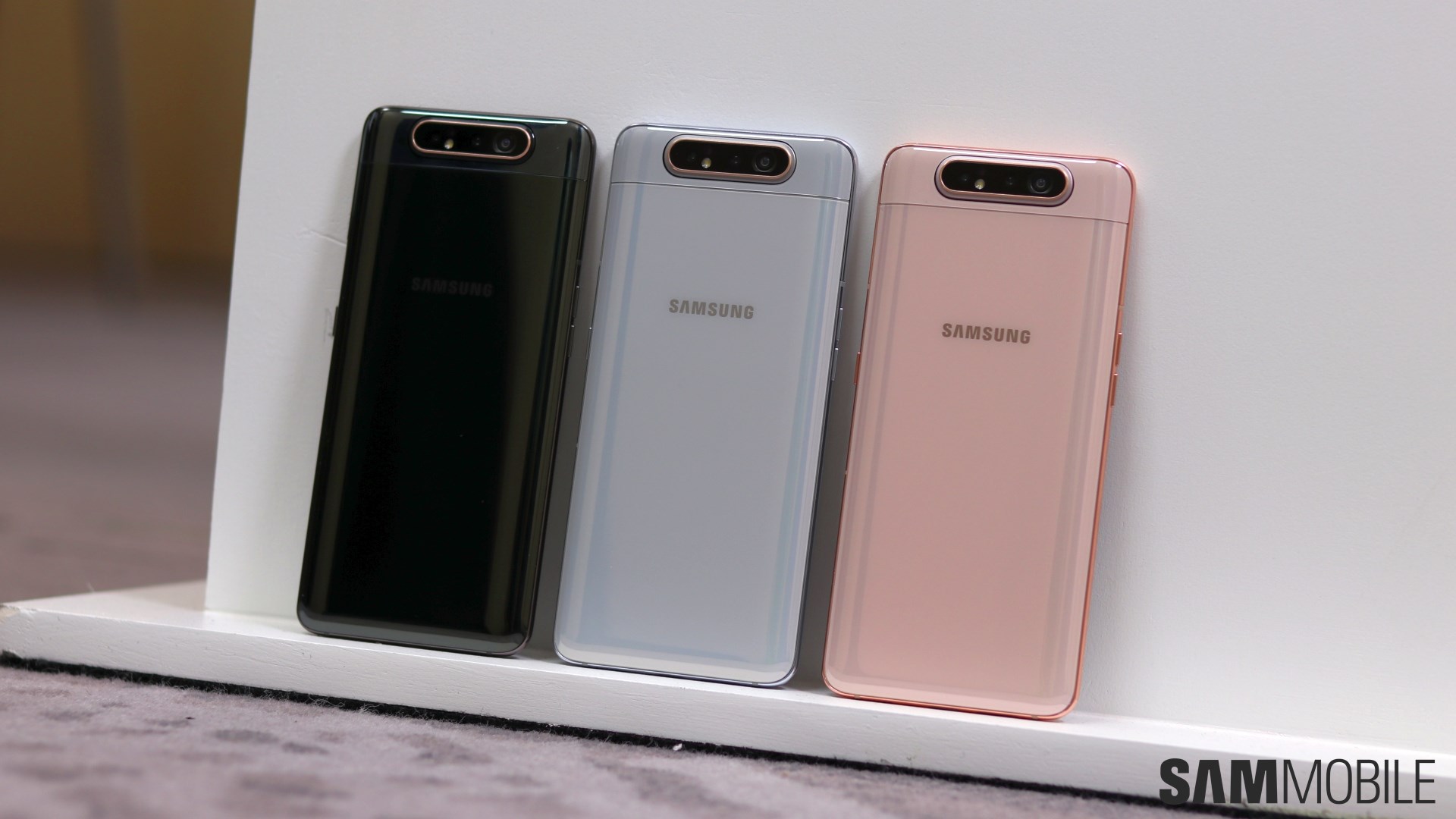
Availability
The Galaxy A80 will be available in Phantom Black, Angle Gold and Ghost White color options with gradient effects. It will be sold only in an 8 GB/128 GB storage configuration and carries a price tag of €649. Pricing and availability will vary by market.

